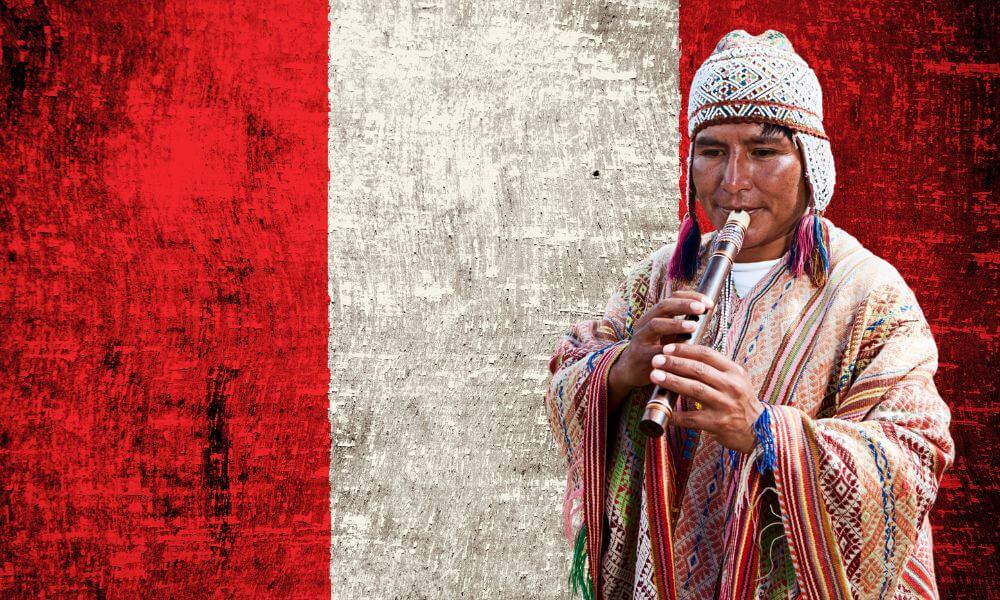Someone from Peru is called Peruvian. If you are a citizen of Peru, whatever else may be said about your background, you are Peruvian. Peru, though, is a fairly complex question when it comes to ethnicity, and locals may feel their ethnic identity more keenly than their national one.
As with any question of nationality, it is rarely all that clear-cut.
The simple answer is that a person of citizenship in Peru, or of descent from inhabitants of Peru, is Peruvian to one degree or another.
At the same time, Peru is not at all an ethnic monolith, and so this can influence perceptions and identity in more ways than one.
Let’s find out more.

What is someone from Peru called?
Someone from Peru is called Peruvian.
This is the simplest and easiest way of looking at it; the standard demonym for a person with citizenship and nationality in Peru is Peruvian.
No one will take issue with being thought of as Peruvian, as crucially there is always a distinction, however clear cut, between someone’s nationality and their ethnicity.
Certainly, when it comes to nations like Peru, our modern idea of a nation state has very much been imposed on it in relatively recent times, while there are enduring indigenous groups who have been there since long before that.
So, then, Peruvian nationals can be split into a few different ethnic subgroups.
For many of these groups, their ethnicity may be the more important part of their identity, as compared with their nationality.
60% of Peruvian nationals, when asked in the Census, identify as Mestizo people.
Mestizo people are an ethnic group descended from an admixture of local, indigenous people and historical European colonists and explorers.
This can mean slightly different things from a cultural point of view, but ethnically it is fairly well-defined and there are populations of Mestizo people across South and Central America.
The next largest group in Peru are the Quechua people, representing around 20% of the population.
The Quechua are an indigenous group that again can be found in many countries in South America such as Bolivia as well as Peru.
Indeed, Quechua people originated in what is now Peru, and the vast majority of the overall Quechua population can be found in Peru.
No doubt these people generally think of themselves as Peruvian, but being Quechua is likely just as if not more important to their identity.
The rest of Peru’s ethnic groups include the 5% European population, 3% Afro-Peruvian, and other smaller minority populations.
Where does the name “Peru” come from?
We aren’t precisely sure where the name of Peru comes from.
It is generally thought to derive from the name Birú, which was the name of a local ruler in the 16th Century who lived near the Bay of San Miguel.
Spanish Conquistadors arriving in 1522 would later invade regions farther south, naming them Birú or ultimately Perú.
Other versions of the naming of the country suggest that there was a common Amerindian who met with the crew of an exploring vessel, and due to the misunderstandings of language, they took his name Berú as the name for the whole area.
The Spanish Crown ultimately gave the name legal status in 1529, designating the old Inca Empire as Peru.
Are you Latino if you’re from Peru?
This is a common question and there is often confusion between the meanings of Hispanic and Latino.
First of all, Latino covers all of Latin America—including Central and South America.
This one, then, is a bit easier to remember. If you are from a Latin American country, you are Latino.
Therefore, someone from Peru is certainly Latino. Because Peru is Spanish speaking, they are also Hispanic—there is no contradiction between these two terms and they are not mutually exclusive.
People in Peru, though, don’t tend to use the term Hispanic of themselves.
So, yes, you are Latino if you’re Peruvian, but this term is one that tends to be used by people of Latin descent living in the U.S., or Americans of Central American countries like Mexico, Cuba, or Puerto Rico.
The confusion is usually just about whether a country is Latino or Hispanic; the vast majority are both. Brazil, because it is Portuguese rather than Spanish speaking, is not Hispanic, for instance.
Where do Peruvians live?
In all this, it’s also important to consider the widespread Peruvian diaspora around the world and how that influences overall Peruvian identity.
There are an estimated 38 million Peruvians worldwide; around 33 million live in Peru itself, with a diaspora of around 5.1 million.
The greatest number of Peruvian immigrants and descendants can be found in the United States, where there are around 600,000. Immigration from Central and South America to the U.S. is very common.
There are also around 320,000 Peruvians living in Argentina, and a further 266,000 in both Spain and Chile.
Again, all of these people may feel multiple things to be true of their identity all at once.
So, again, there’s a short answer and a long answer.
There’s the simple way of looking at it in terms of someone’s nationality and their legal citizenship, but there’s also the question of their ethnic identity and what they as an individual feel to be the more important aspect of their identity.
Peruvians may of course feel both things to be true at the same time and there is no contradiction in that whatsoever.
More in Demonyms
- What Do You Call Someone From Afghanistan?
- What Do You Call Someone From Algeria?
- What Do You Call Someone From Argentina?
- What Do You Call Someone From Australia?
- What Do You Call Someone From Azerbaijan?
- What Do You Call Someone From Bangladesh?
- What Do You Call Someone From Barbados?
- What Do You Call Someone From Belgium?
- What Do You Call Someone From Botswana?
- What Do You Call Someone From Crete?
- What Do You Call Someone From Denmark?
- What Do You Call Someone From Ecuador?
- What Do You Call Someone From Egypt?
- What Do You Call Someone From El Salvador?
- What Do You Call Someone From Fiji?
- What Do You Call Someone From Finland?
- What Do You Call Someone From France?
- What Do You Call Someone From Ghana?
- What Do You Call Someone From Greece?
- What Do You Call Someone From Greenland?
- What Do You Call Someone From Hong Kong?
- What Do You Call Someone From Iceland?
- What Do You Call Someone From India?
- What Do You Call Someone From Ireland?
- What Do You Call Someone From Israel?
- What Do You Call Someone From Japan?
- What Do You Call Someone From Jersey?
- What Do You Call Someone From Jerusalem?
- What Do You Call Someone From Jordan?
- What Do You Call Someone From Kazakhstan?
- What Do You Call Someone From Laos?
- What Do You Call Someone From Malta?
- What Do You Call Someone From Myanmar?
- What Do You Call Someone From Niger?
- What Do You Call Someone From Pakistan?
- What Do You Call Someone From Panama?
- What Do You Call Someone From Peru?
- What Do You Call Someone From Rwanda?
- What Do You Call Someone From Singapore?
- What Do You Call Someone From Sri Lanka?
- What Do You Call Someone From Sweden?
- What Do You Call Someone From Switzerland?
- What Do You Call Someone From Thailand?
- What Do You Call Someone From The Isle of Wight?
- What Do You Call Someone From The Ivory Coast?
- What Do You Call Someone From The Netherlands?
- What Do You Call Someone From Uzbekistan?
- What Do You Call Someone From Vatican City?
- What Do You Call Someone From Wales?
- What Do You Call Someone From Zimbabwe?

